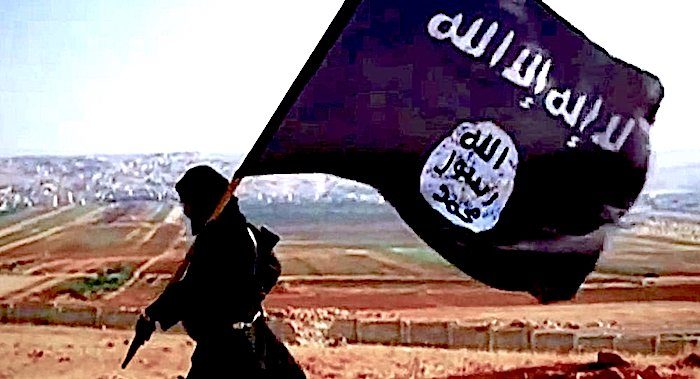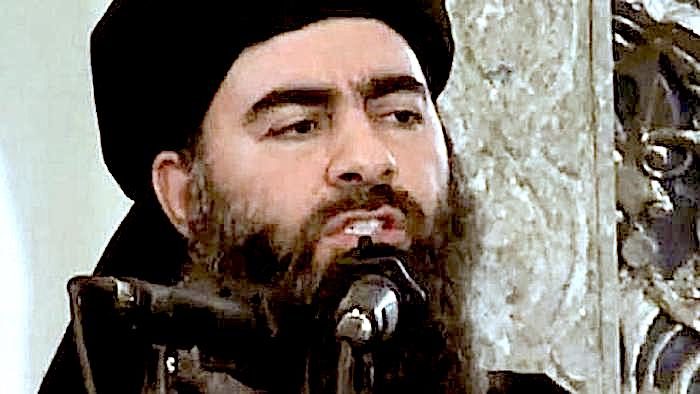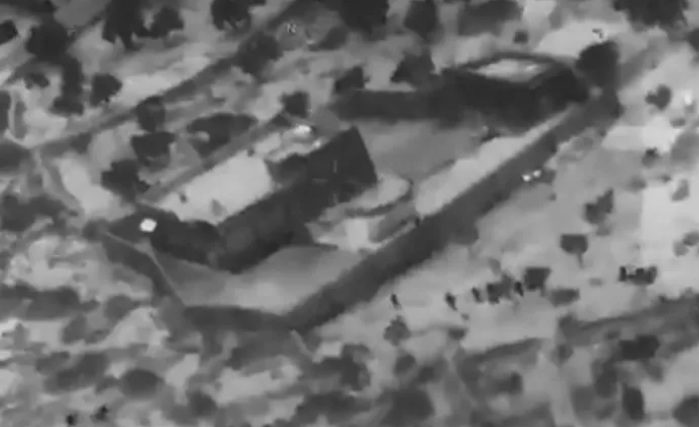
© VOA
But just who is he? And why has he been so quiet since taking command of the terror group?
- Amir Mohammed Abdul Rahman al-Mawli al-Salbi, aka Abu Ibrahim al-Hashimi al-Qurashi, aka al-Haj Abdullah Qardash, is thought to have assumed the role as the second 'caliph' of Daesh's 'caliphate' on October 31, 2019, four days after the US assassination of the terror group's longtime leader and founder Abu Bakr al-Baghdadi. Western intelligence officials confirmed that al-Salbi had taken up the leadership role only three months after the fact, in January 2020, owing to some confusion regarding his various aliases and given the terrorist group's shattered state.
- Al-Salbi joined Daesh in 2014, switching loyalties from al-Qaeda, a rival terror organization, and taking part in the Daesh offensive to occupy Mosul in June 2014.
- In its formal announcement on al-Salbi's terror designation, the State Department pointed to his alleged role in masterminding and attempting to justify "the abduction, slaughter, and trafficking of Yazidi religious minorities in northwest Iraq" during the caliphate's advance. In August 2014, over 5,000 Yazidis were killed by Daesh in the Sinjar massacre, with thousands more injured or taken into captivity, becoming the terrorists' slaves or sold back to their families for large sums of ransom money. Al-Salbi is believed to have helped orchestrate the crime as deputy to al-Baghdadi.

© AP 2020This July 5, 2014 photo shows an image grab taken from a propaganda video released by al-Furqan Media allegedly showing the leader of the Islamic State (IS) jihadist group, Abu Bakr al-Baghdadi, aka Caliph Ibrahim, adressing Muslim worshippers at a mosque in the militant-held northern Iraqi city of Mosul.
- An ethnic Turkman (Iraq's third largest ethnic group after Arabs and Kurds), al-Salbi served in the Iraqi Army under Saddam Hussein, ascending to the rank of major, and is thought to have fought the US occupation of Iraq after the 2003 invasion. He is believed to have met Baghdadi in 2004, after the two men were detained by US occupying forces at the notorious Camp Bucca prison in Basrah region.
- Al-Salbi goes by the name Abu Ibrahim al-Hashimi al-Qurashi. This led to some confusion over who was leading Daesh after al-Baghdadi's death. Western intelligence sources only confirmed to media that al-Mawli and al-Qurashi are one and the same person at the start of this year.
According to some analysts, not all of Daesh's remaining militants are happy with al-Salbi in command, owing to the fact that
he is not Arab. Nevertheless, his religious fanaticism, and reputation as an 'Islamic scholar' allowed him to become
"one of the most influential ideologues" of the terror group. His nicknames reportedly include "The Professor" and "Destroyer."

© Screen Shot/US Central CommandImage shows the moment that US special forces are seen approaching the compound where Daesh leader Abu Bakr al-Baghdadi was in hiding.
- Commenting on the State Department's move to place al-Salbi on its terror watch list, Arabic studies expert Alexei Malashenko said the move seems largely symbolic, meant to serve as a signal that the US is continuing its fight against Daesh, even though as an individual al-Salbi is small fry compared to the likes of al-Baghdadi or al-Qaeda's Osama bin Laden.
- Furthermore, although Daesh has lost the entirety of its Iraqi-Syrian 'caliphate', the terrorist group is still a serious and dangerous organization that deserves global attention, Malashenko believes. "Even though Daesh has been defeated, the idea of a global caliphate continues to live on. The terrorist group could be revived in southern Libya, in Somalia or Nigeria. Measures to prevent this are necessary," the observer says.






Reader Comments
So who is Amir Mohammed Abdul Rahman al-Mawli al-Salbi? Who the f**k cares. Any group of ragtag buffoons can be Isis for a day, week, year or whatever the US/UK and their proxies require.
The pool of recruits from third world countries is deep. They probably make more in a month than they could in a year by playing the role of terrorist in black.